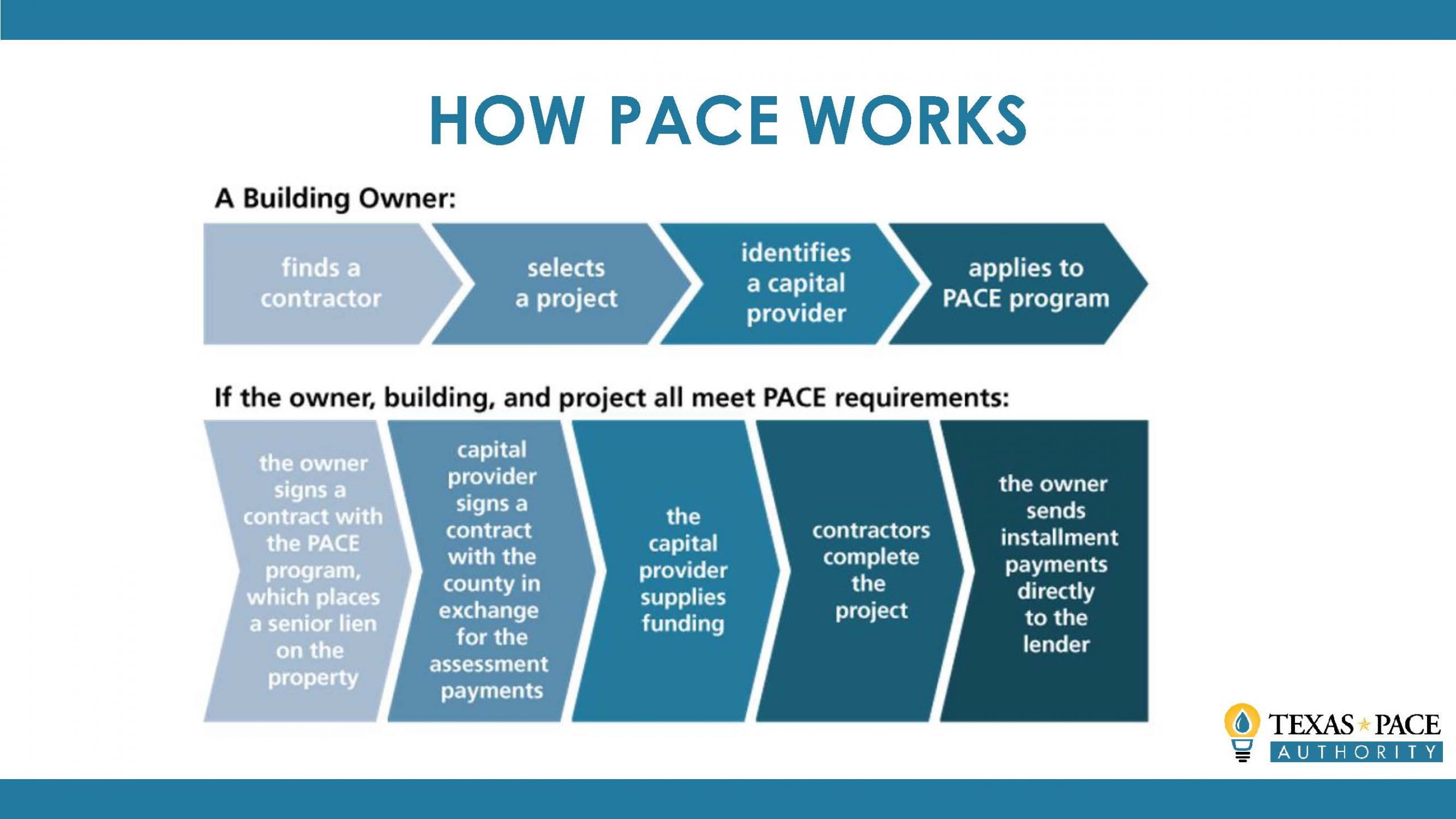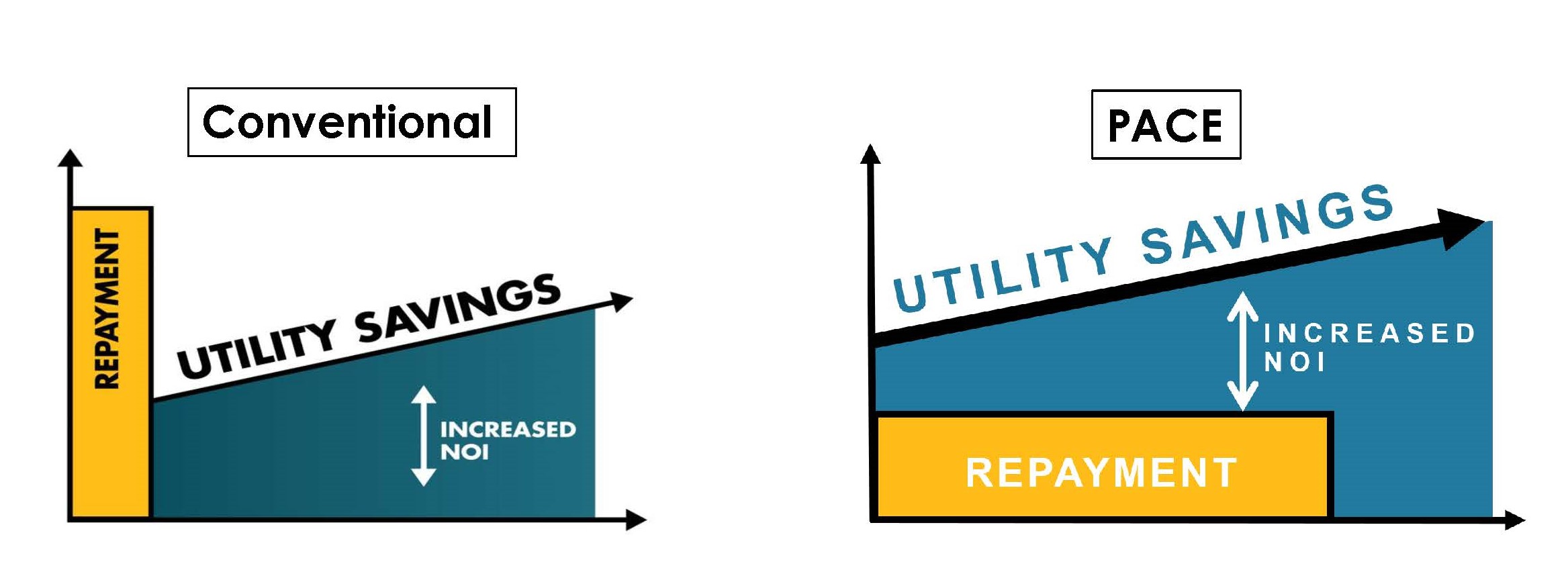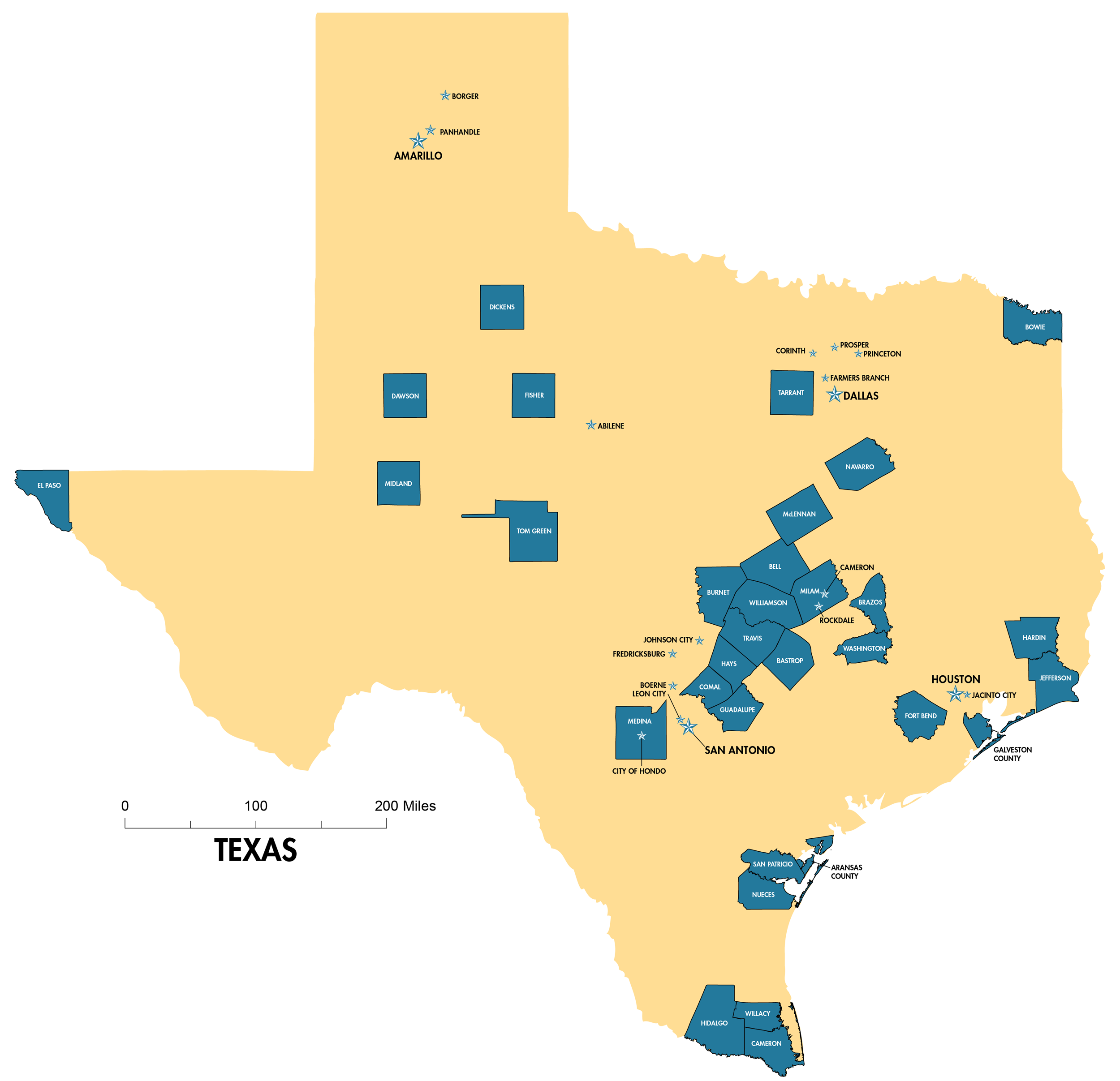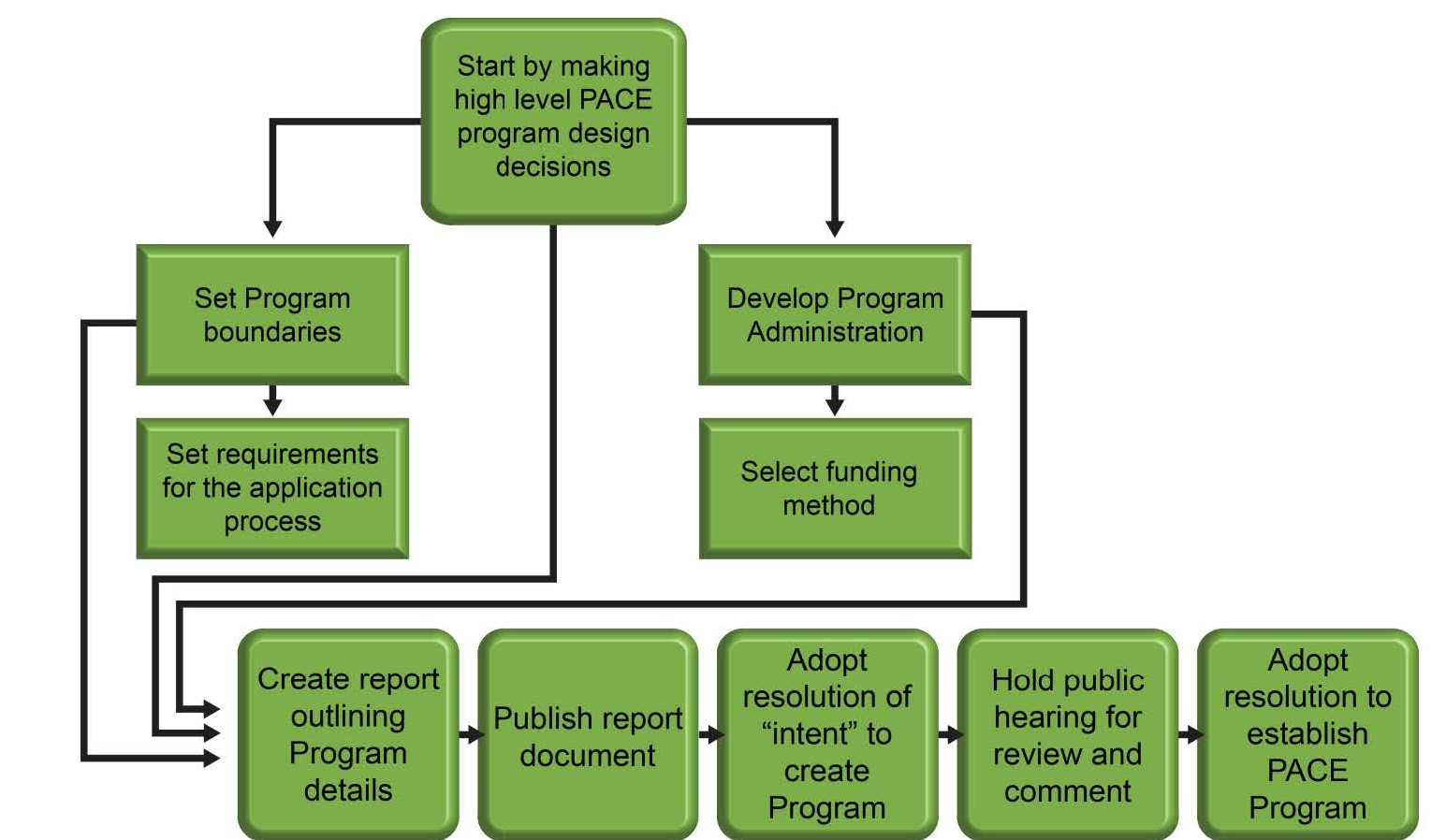Property Assessed Clean Energy (PACE) is long term, low cost 100% financing for energy efficiency, water conservation, and distributed generation projects. Local governments can establish a PACE district providing commercial, industrial, and multifamily property owners access to project financing that is repaid through an assessment on their property tax bill. Establishing a PACE district is an Action Cities Can Take to Support Energy Efficiency in Texas.
What is TX-PACE?
PACE is a financing mechanism for energy efficiency, water conservation, distributed energy, and resilience projects where a building owner partners with a qualified capital provider of their choosing and the debt is paid back as an assessment on their property tax bill. The PACE assessment is attached to the title of the real property and transfers to the new owner in the case of a sale.
The Texas PACE program (TX-PACE) was created in 2013 by Chapter 399 of the Texas Local Government Code (“The PACE Act”), which gives the local governments the authority to develop a PACE District.
PACE financing can be used for industrial, commercial, and multifamily residential properties over five units. Buildings must be located within a PACE region in order to utilize PACE financing. PACE is available for a wide range of qualifying projects including energy efficiency upgrades to building HVAC, lighting, envelope and other energy using systems, water conservation, auxiliary water, wastewater recovery systems, and distributed energy systems such as solar photovoltaic systems.
Figure 1 provides an overview of a typical PACE process. Texas PACE Authority and Keeping PACE in Texas offer an array of detailed resources on PACE in Texas.

Figure 1: The TX-PACE process for building owners (Source Texas PACE Authority)
Benefits of PACE
Establishing a PACE district not only creates benefits for property owners, but also benefits contractors, lenders, communities, and the State of Texas.
The PACE program provides 100% upfront financing so no initial capital is required. Immediate savings means property owners will quickly see reductions in their energy bills. Loan terms up to the full life of the equipment (20+ years) creates a positive return on investment from day one (Figure 2). As previously mentioned, the loan stays with the land and transfers to the new owner upon sale.

Figure 2: Long financing terms and energy savings creates positive cash flow from day one for PACE projects. (Source Texas PACE Authority)
Economic development and job creation are primary reasons jurisdictions pursue new PACE districts. PACE facilitates investment in existing buildings and infrastructure, creating business for local contractors, and rewarding contractors who specialize in efficiency and emerging technology. For lenders, PACE opens new markets of fully collateralized, steady and stable loans. PACE loans do not affect conventional lending sources and will not compete for capital with other building owner investment opportunities.
Like all efficiency projects, PACE projects can also contribute to reduced peak energy demands, enhanced grid reliability, improved air quality, conversation of water resources, and resilient distributed energy generation, which benefits all Texans. The TX-PACE Energy and Emissions Tracker, developed by HARC and Texas PACE Authority, is an interactive tool that allows viewers to see how TX-PACE projects are reducing energy and water consumption, lowering emissions, and providing significant economic benefits across Texas (Figure 3). The tracker provides details on a statewide, district, and project-by-project basis. As of August 2020, Texas PACE has resulted in nearly $118 Million in clean energy investment, and saved over 274,000 MMBtu of energy (Figure 4).

Figure 3: The TX-PACE Energy and Emissions Tracker tracks economic, energy, water, and emissions impacts of Texas PACE

Figure 4: TX-PACE Statewide Progress as of August 2020 (Source: TX-PACE Energy and Emissions Tracker)
How to Establish a PACE District
Local governments including cities and counties have established PACE districts throughout Texas. As of this writing the ever-growing PACE districts includes 32 counties and 20 cities.

Figure 5: Current PACE districts in Texas (Source Texas PACE Authority)
A coalition of over 100 PACE stakeholders developed the Texas “Pace in a Box” Toolkit, that includes all of the information a local government needs to create a PACE program. It includes model documents and contracts, case studies from communities and projects throughout Texas, and more. By utilizing these standard documents and program design guidelines, PACE programs can be designed in a uniform format among regions in Texas, allowing financial stakeholders to easier utilize PACE financing throughout Texas. Access the “PACE in a Box” toolkit here.
The PACE Act established the process for creating a PACE district in Texas. The Texas “Pace in a Box” Toolkit provides more detail on this process and model documents to assist in the adoption process. Generally the process includes six steps:
- Post a report on how the program will work on your website
- Public briefing and discussion of how the program will work (optional)
- Adopt a resolution of intent to establish a program that references the report and sets a hearing date
- Hold a public meeting (required)
- Adopt a resolution establishing a PACE program
- Select a program administrator
A local government must make some decisions internally leading up to the creation of the report outlining program details (Figure 6). Again, the PACE in a Box toolkit provides detailed guidance on each step of the district establishment process.

Figure 6: Local government actions to create a PACE district (Source: PACE in a Box, Keeping PACE in Texas)
In 2015, Travis County became the first local government in Texas to establish a PACE district.
The State Energy Conservation Office (SECO), HARC, and SPEER created a case study detailing Travis County’s experience – including what steps Travis County needed to take to create a PACE district, what stakeholders were involved, and more.
Read the Creating the First PACE District in Texas case study.